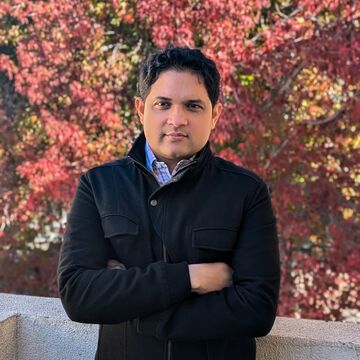

Shiben Banerji
Associate Professor
Contact
Bio
BA, Columbia University, New York, NY; MCP, Massachusetts Institute of Technology, Cambridge, MA; PhD, Massachusetts Institute of Technology, Cambridge, MA. Publications: In the Shadows of Democracy: Possibilities for Rhetoric Beyond Rhetorical Studies (Intemezzo Books, 2025); Lineages of the Global City: Occult Modernism and the Spiritualization of Democracy (University of Texas Press, 2025). Awards: Mellon Junior Fellowship in the Humanities, Urbanism, and Design; Graham Foundation for Advanced Studies in the Fine Arts Publication Production Grant
Shiben Banerji is interested in the rhetorical and performative dimensions of architecture. His classroom teaching and historical scholarship are animated by three questions. First, how did architects in early modern Europe describe their interest in the nature of political oratory at the very moment that they began studying architectural forms that were not derived from Roman antiquity? Second, how did architects across the Americas, Europe, Africa, Asia, and Australia mediate new conceptions of public association in the context of nineteenth-century colonialisms, and how did concomitant experiments in old and new media present architectural and urban space as objects of artistic depiction and literary invention? Third, how did twentieth-century theorists of alternatives to liberal modernity in the ex-colonial world conceptualize the work of architectural media in altering perception and consciousness?
Shiben is the author of Lineages of the Global City (University of Texas Press, 2025), which was supported by a Mellon fellowship in the urban humanities and a publication grant from the Graham Foundation. Explicating the conjunction of planning and occultism in the early twentieth century, the book examines the designation of planned urban space as a site for forming a global ethos—meaning both an outlook on oneself as inescapably linked to every creature and thing, as well as the obligation to choose and act with a regard for one's inexorable impact on others. A similar attention to forms of rhetorical action that sustain notions of belonging informs Shiben's coedited volume In the Shadows of Democracy (Intermezzo Books, 2025).
Shiben is currently writing Time on the Road to Civil Rights, which foregrounds the salience of planning in civil rights discourse to advance a genealogical critique of the synchronic emergence of rhetorical theory and planning theory in the mid-twentieth century. He has also begun editing an anthology of uses and meanings of "spirit" in twentieth-century aesthetic, economic, and political thought.
Recent Thesis Advisees
- Melanie Ball (2021) “An Air of Serenity: Chicago’s Carl Sandburg Village and the Construction of Middle-Class Desire, c.1962”
- Nicolay Duque-Robayo (2021) “Curiosity in the City: Affect and the Formation of the Reflective Planner”